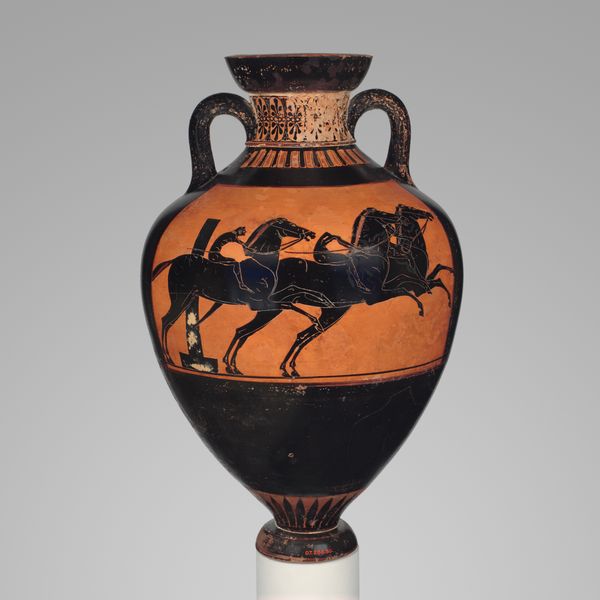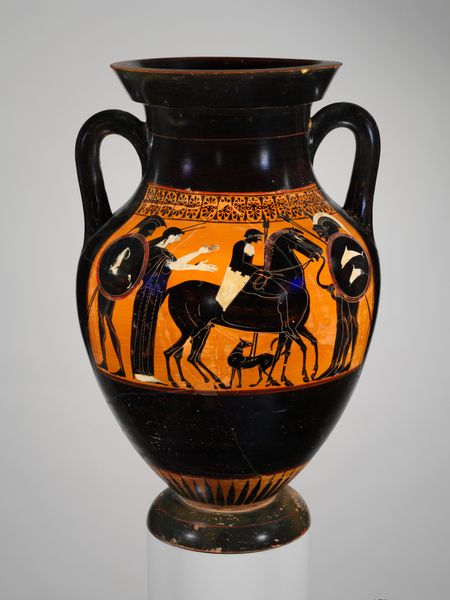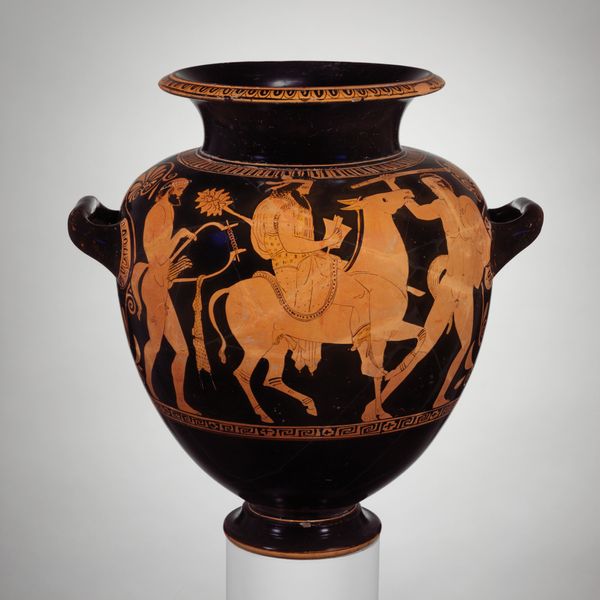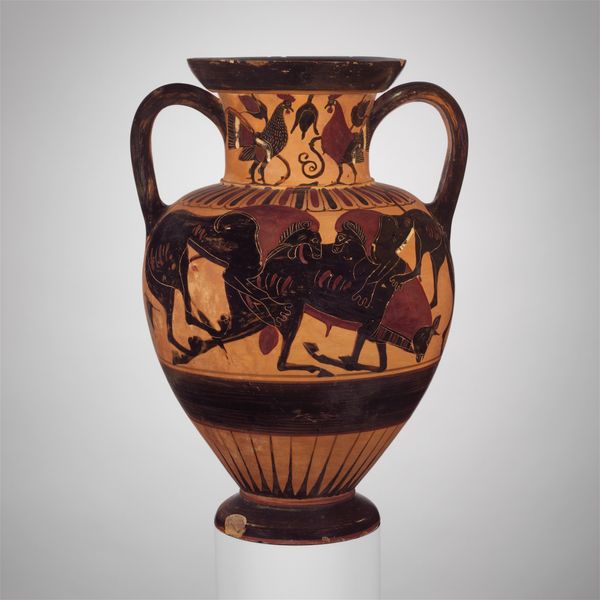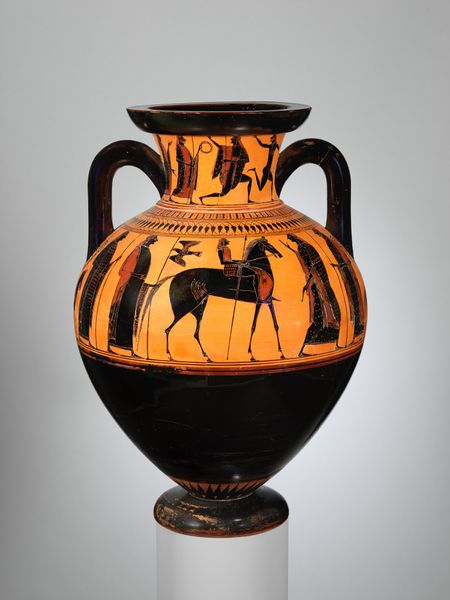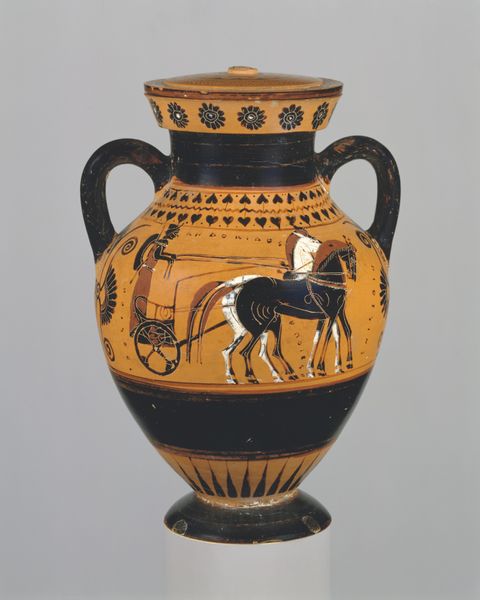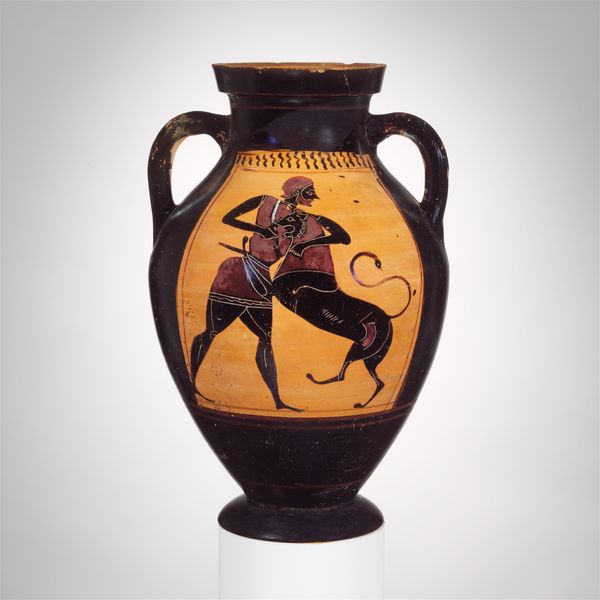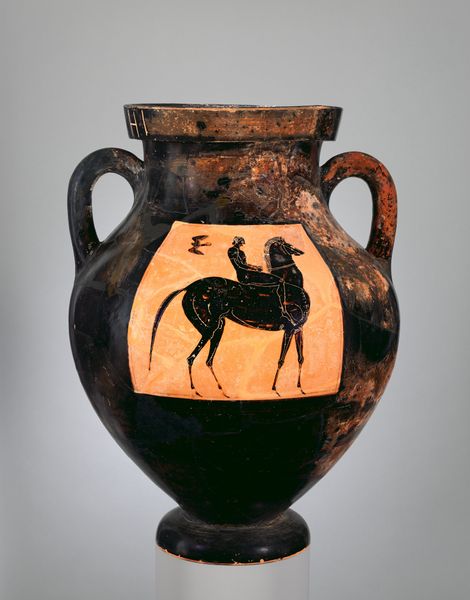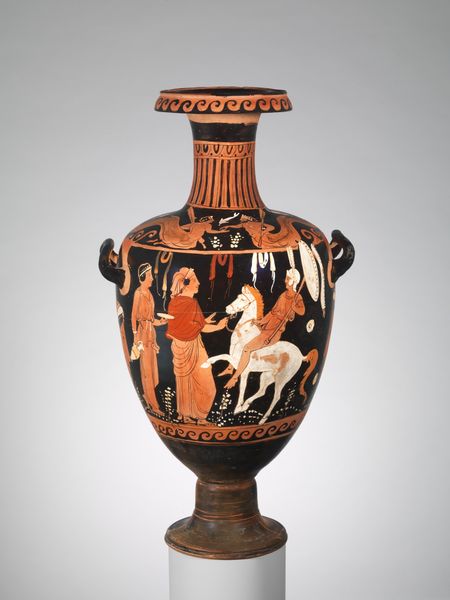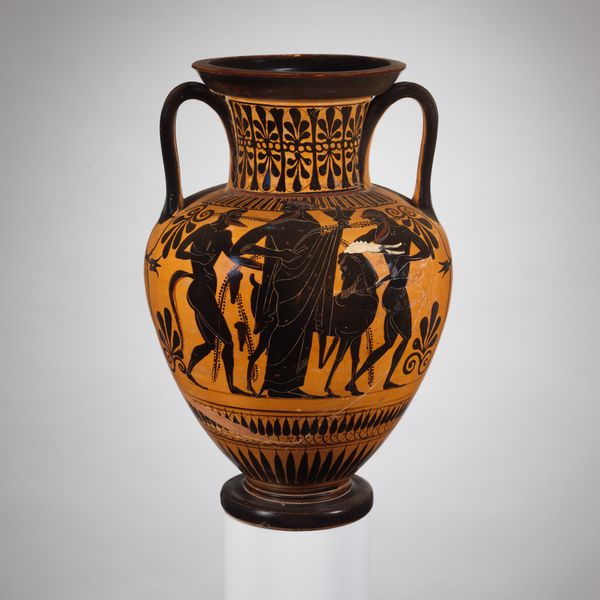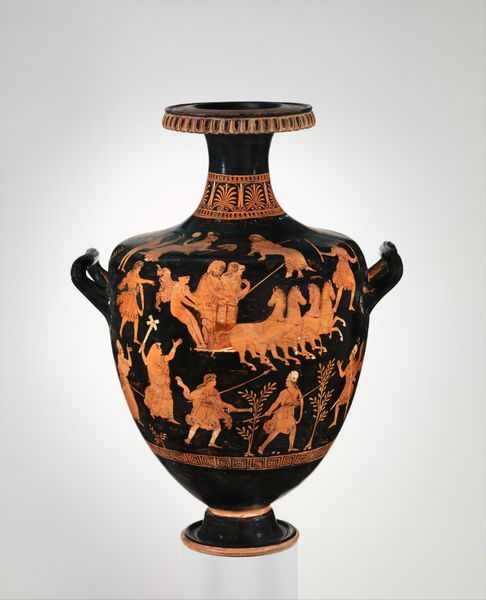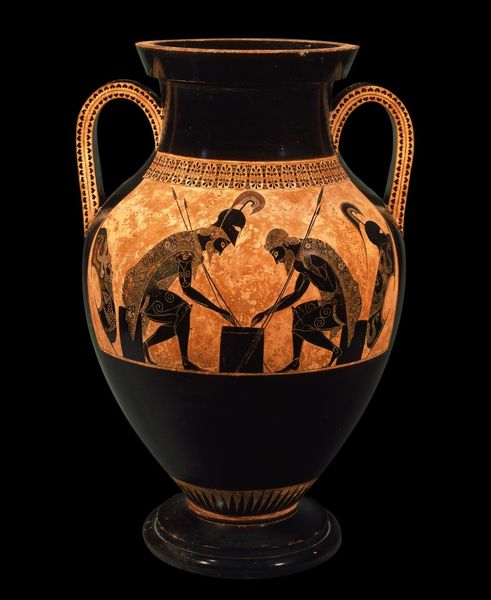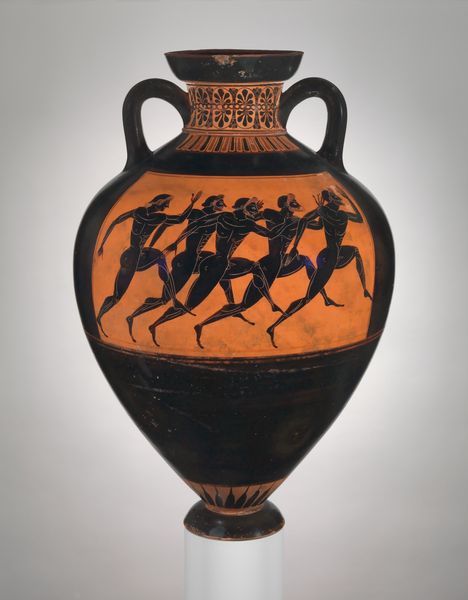
ceramic, earthenware
#
portrait
#
narrative-art
#
greek-and-roman-art
#
ceramic
#
figuration
#
earthenware
#
geometric
#
ancient-mediterranean
#
horse
#
ceramic
#
men
#
earthenware
Dimensions: Overall: 19 3/4 x 15 1/2in. (50.1 x 39.4cm) diameter of mouth 8 1/2in. (21.6cm) diameter of body 12 3/16 in. (30.9 cm)
Copyright: Public Domain
Curator: Let’s take a look at this Terracotta hydria, dating back to about 560 BC, currently held at the Metropolitan Museum of Art. It's attributed to the artist Lydos. Editor: Wow, okay. My first thought? Intense. The black figures really pop against that warm terracotta background, and the scenes feel so…staged, somehow. Like a freeze-frame from an epic play. Curator: Precisely. The hydria, a water jar, is adorned with narrative scenes. Look closely; you'll see figures marching and riding horses, possibly warriors or heroes. The choice of black-figure technique wasn't merely aesthetic; it became a powerful visual language of ancient Greece. Editor: It’s interesting how the artist, Lydos, uses that contrast. The bold black silhouettes really simplify the human form. I mean, you get the details that matter – the shields, the spears, the helmets – but the emotion is really…withheld, isn't it? There's no softening. Curator: And there's purpose in that. Consider the geometric patterns decorating the vase. The heart motifs and rows of chevrons aren't just decorative; they echo the order and structure of the society that created it. Each element tells a story, linking aesthetics with cultural memory. It is functional art elevated into cultural artifact. Editor: Right, it’s about conveying strength, power, stoicism. But look at how stylized the horses are! They almost look like chess pieces – strong, simple, symbolic. Makes you wonder, doesn't it, how much individual expression Lydos was allowed, within these conventions? Curator: Exactly! We often project our modern desire for originality onto artists of the past, but Lydos, operating within the conventions of his time, found a potent way to embody and reiterate the dominant values of his society. His work reminds us that artistic intention is always culturally shaped. Editor: It's wild to think about water being carried in something this visually commanding. Art influencing the most mundane parts of life! You start seeing symbolic choices everywhere. Curator: Indeed, it’s in those everyday uses that these images truly sunk into cultural consciousness. A vessel not just for water, but also for ideals. Editor: So, we're left contemplating power, culture, memory…all radiating from a humble water jar. Amazing.
Comments
No comments
Be the first to comment and join the conversation on the ultimate creative platform.
